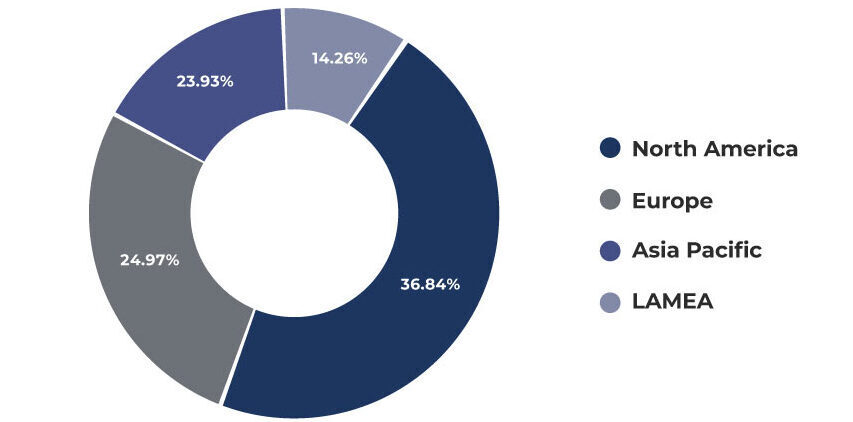Future trends in Gen-AI
Enterprises spent about $19.4 billion worldwide on generative artificial intelligence (genAI) technologies in 2023, and that amount is expected to double this year. The spending covers genAI software, as well as related infrastructure hardware and IT/business services. By 2027, spending is projected to reach $151.1 billion, reflecting a compound annual growth rate of 85.9% from 2023 to 2027.
Investments in genAI are expected to follow a natural progression over the next several years, with organizations moving from the experimentation phase to building capability, aiming to reduce time and costs related to customer and employee productivity. Subsequently, the focus will shift toward investments that boost revenue and business outcomes.
More than half of the spending on generalized use cases will be concentrated on chatbots and communications platforms, which are anticipated to drive substantial improvements in both customer and employee experiences. While companies across various sectors will shift their tech spending towards AI implementation and the adoption of AI-enhanced products and services, the IT industry will experience a larger and faster shift to genAI during the same period.
GenAI Infrastructure, including hardware, Infrastructure as a Service (IaaS), and system infrastructure software (SIS), will represent the largest area of investment during the build-out phase, according to IDC. However, genAI Platform and Application Software will gradually surpass infrastructure spending by the end of 2027, with a five-year compound annual growth rate (CAGR) of 99.1%. Similarly, GenAI Services, encompassing IT and business services, will nearly match infrastructure spending by the end of the period, with a five-year CAGR of 94.6%.
“Generative AI has served as a catalyst for investments in traditional AI solutions. The synergy between traditional and generative AI opens up a world of possibilities across industries,” said Ritu Jyoti, IDC’s group vice president for Worldwide Artificial Intelligence and Automation services. “As we look ahead to the future of AI, embracing a holistic approach that merges traditional AI with generative creativity will enable more versatile AI systems capable of adapting to evolving challenges, while fostering disruptive innovation.”
According to a Forrester survey, the estimated spend on genAI will grow by 36% annually through 2030. GenAI is expected to capture 55% of the total AI software market, with $42 billion annually spent on genAI for generalized use cases such as research, writing, and summarizing tools. Additionally, organizations will collectively spend $79 billion a year on specialized applications designed to enhance automation and productivity, especially in the security, health, and content marketing industries.
In another study from Gartner, one of the leading technological research and consulting firms, the future of genAI for 2024 and beyond has been predicted. By 2027, the productivity value of AI will be recognized as a primary economic indicator of national power.
Governments have demonstrated a strong commitment to AI, prioritizing strategies and plans that recognize it as a key technology in both the private and public sectors. The integration of AI into long-term national planning is being strengthened through the enactment of relevant laws and regulations to support AI initiatives.
Gartner suggested that the implementation of AI at a national level will solidify its role as a catalyst for enhancing productivity, which is essential for boosting the digital economy. The successful execution of large-scale AI initiatives requires the support and collaboration of a diverse set of stakeholders. By 2027, GenAI tools will be used to explain legacy business applications and develop appropriate replacements, resulting in a 70% reduction in modernization costs.
Gartner further stated that the maturity of large language models (LLMs) provides a significant opportunity for Chief Information Officers (CIOs) to modernize legacy business applications in a cost-effective manner. CIOs can create dedicated testing units to evaluate the output generated by GenAI LLMs, while also establishing change management and upskilling processes to ensure the workforce can maximize productivity throughout the modernization cycle.
By 2028, enterprise spending on combating malinformation is projected to exceed $30 billion, diverting 10% of marketing and cybersecurity budgets to address this multifaceted threat. Malinformation influences decision-making processes, both human and machine, and can be extremely difficult to detect and shut down. It poses threats across three key functional areas: cybersecurity, marketing, and AI.
With the rapid rise of GenAI, the risk of malinformation has grown, which is causing significant concern for regulators. Enterprises that stay vigilant in monitoring risks and collaborate with regulators and technology providers focused on combating malinformation are likely to gain a competitive advantage.
By 2027, 45% of Chief Information Security Officers (CISOs) will expand their responsibilities beyond cybersecurity due to growing regulatory pressures and an expanding attack surface. Security management and the protection of digital assets are becoming increasingly fragmented across various divisions and teams, with the CISO overseeing the overall digital asset portfolio. This fragmentation creates inconsistencies in regulatory disclosures, assurance of digital security, and management of security incidents, ultimately hindering the organization’s overall performance.
Expanding the portfolio of the Chief Information Security Officer (CISO) will help unify security management, allowing for oversight of a consolidated security incident management process across the entire organization. By 2028, the rate of unionization among knowledge workers is expected to increase by 1,000%, driven by the adoption of GenAI.
The introduction of GenAI will create anxieties among staff, so it is crucial for leaders to communicate clearly with employees regarding the internal deployment of AI. This will help prevent the unintended consequences of building AI-related anxiety among staff. Organizations that adopt GenAI but fail to address AI anxiety among their knowledge workers are expected to experience a 20% higher rate of turnover.
The report suggests that organizations should focus their AI efforts on worker augmentation to improve productivity and the quality of work, rather than automating roles.
By 2026, 30% of workers are expected to use digital charisma filters to achieve career advancements that were previously unattainable. A digital charisma filter enhances and refines communications, making them more socially effective in various situations. These filters nudge individuals before, during, and after interactions, helping leaders and co-workers excel in the social contexts where they wish to perform better. Digital charisma filters will also improve organizations’ abilities to expand hiring and include a more diverse range of workers.
Reports suggest that organizations can expand their talent pool by incorporating digital charisma filter assistants to enhance the congruency of interactions throughout all phases of recruiting and employment. To accelerate access to digital charisma assistants, enterprises should press productivity and application vendors on how they are incorporating these capabilities into their roadmaps.
By 2027, 25% of Fortune 500 companies will actively recruit neurodivergent talent, including individuals with conditions such as autism, ADHD, and dyslexia, in order to improve business performance. Organizations that hire and retain neurodivergent talent are expected to see increased employee engagement, productivity, and innovation across the workforce. Large enterprises are already investing in neurodiversity hiring programs and are witnessing positive impacts on engagement and business outcomes. To further this effort, organizations need to establish outreach programs to enhance the discoverability of neurodiverse talent, fast-tracking initiatives by leveraging best practices from experts and lessons learned from leading organizations already focused on neurodiversity.
By 2026, 30% of large companies will have dedicated business units or sales channels aimed at accessing the fast-growing machine customer markets. Machine customers will drive a reshaping of key functions such as supply chain, sales, marketing, customer service, digital commerce, and customer experience. In fact, by 2025, more than 25% of sales and service centers in large organizations will be fielding calls from machine customers. These machine customers will require their own sales and service channels, as they make transactions at high speeds and rely on decision variables far beyond human capabilities.
By 2028, there will be more smart robots than frontline workers in manufacturing, retail, and logistics due to ongoing labor shortages. Most manufacturing, retail, and logistics companies are struggling to find or retain enough workers to support day-to-day operations, which will cause supply chain organizations to face difficulties in sourcing frontline workers over the next decade. Robots will help fill this gap. A December 2022 Gartner survey revealed that 96% of supply chain technology workers have either deployed or plan to deploy cyber-physical or plan to deploy cyber-physical automation and 35% have already deployed robots, with 61% piloting or in the middle of their first implementation.
Aging grid infrastructures are limiting the ability to expand electricity generation capacity, while the demand for electricity continues to rise. Enterprises are increasingly viewing energy prices and accessibility as critical factors for competitiveness, meaning that stable access to electricity for customers will become a key competitive advantage. As a result, executive leaders are focusing on creating energy-aware operations through optimization and direct investments in energy generation.


